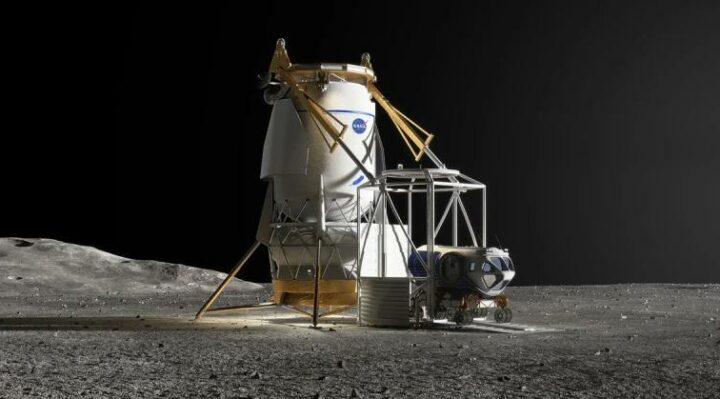
In the early 2030s, NASA intends to send a pressurized rover and surface dwelling to the lunar surface using cargo versions of the Artemis lunar landers that Blue Origin and SpaceX are developing.
The first such awards since NASA announced in January that it was ordering the two companies to develop cargo versions of their Human Landing System (HLS) spacecraft, the agency announced it will add work to existing contracts for the development of cargo versions of Blue Origin’s Blue Moon and SpaceX’s Starship to deliver payloads to the moon’s surface.
According to a deal announced in April, NASA stated that Starship will deliver the pressurized rover being developed by the Japanese space agency JAXA no sooner than fiscal year 2032. No earlier than fiscal year 2033, Blue Moon is scheduled to deploy a lunar surface habitat.
“NASA assigned a pressurized rover mission for SpaceX and a lunar habitat delivery for Blue Origin based on current design and development progress for both crew and cargo landers and the Artemis mission schedules for the crew lander versions,” said Lisa Watson-Morgan, NASA HLS program manager, in a statement released on Nov. 19.
The value of the upcoming awards to the two companies for those missions was not disclosed by NASA. NASA did not provide an explanation for its decision to make the anticipated awards months in advance, just stating that it will send out a request for proposals to the two companies in early 2025 for those missions.
Additionally, the agency did not explain the criteria it used to choose each company for a particular cargo flight. In the statement, NASA assistant deputy associate administrator for technical in the Moon to Mars Program Office Steve Creech said, “Having two lunar lander providers with different approaches for crew and cargo landing capability provides mission flexibility while ensuring a regular cadence of moon landings for continued discovery and scientific opportunity.”
In January, NASA said that it has ordered the two firms to begin developing cargo versions of their HLS landers. In contrast to the robotic landers the agency utilizes for the delivery of science and technological demonstration payloads as part of its continuing Commercial Lunar Payload Services program, the landers are designed to carry at least 12 to 15 metric tons to the lunar surface, the agency said at the time.
In January, NASA stated that the cargo versions of Blue Moon and Starship would not need new money because the initial work will be completed under current HLS grants.



